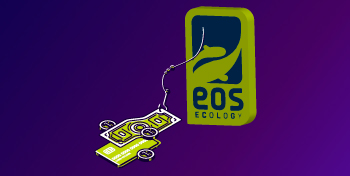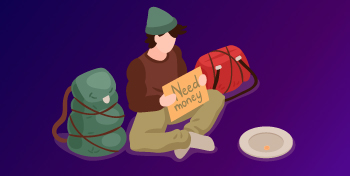Scalability, decentralization and security are the three pillars of blockchain technology. But all three are not compatible yet. If you delve into the project descriptions on Coinmarketrate.com then you will see that they either prefer to focus on two out of three, or are working on finding a solution to solve the trilemma once and for all. Innovative ideas such as sharding, side chains and state channels are being used to solve the trilemma, but they are still experimental.
Solving this problem may lead to wider adoption of cryptocurrencies and blockchain, and widespread use of the technology in various industries. Safety. Decentralization. Scalability. Three pillars of cryptocurrency that seem to constantly strive for coexistence, but cannot live in harmony.
The blockchain trilemma, invented by Vitalik Buterin, refers to this idea, and it leads to some interesting ways in which projects and networks are trying to solve this problem once and for all. But what exactly is the blockchain trilemma, and why doesn’t it have a simple solution? Let’s figure it out together.
Three factors of struggle
Do you know how difficult it is to balance social life, work and sleep? The blockchain trilemma is similar. There is an opinion in the cryptocurrency community that truly decentralized networks should choose between security and scalability. Let’s take a brief look at them before diving into the topic.
- What is decentralization?
Decentralization is the transfer of control from one central authority, company or government, to smaller groups to manage something. In blockchain, decentralization enables people around the world to manage using their computers (nodes) instead of having central control over the network owned by one person or group.
- What is blockchain security?
Blockchain is inherently secure, but it is not completely protected from hacking. If a hacker manages to gain control over more than half of the network (51%), he will be able to change the blockchain and manipulate transactions to steal from the network. In the blockchain, the more nodes, the higher the security.
- What is scalability?
Scalability in blockchain is the same as in business: it means how much the network can grow in the future while maintaining the same transaction speed and performance.
Scalability and decentralization, when combined, usually compromise security, while security limits the changes that allow a decentralized network to scale. Why? Well, mainly because decentralized networks require a lot of work to work, and this makes scaling somewhat difficult.
Decentralization and security are the best friends of blockchain
Decentralization is the basis of blockchain and cryptocurrency. This means that there is no central authority or organization managing the project, and eliminates the need for a third party to ensure the functioning of the industries. For example, in traditional finance we have banks. They are centralized and act as the party that stands in the middle between you and your money. This is generally accepted because banks assume the responsibility to offer us a way to safely store and transfer money. We expect the money to go where we send it, and in exchange for security, we give up some control over our money.
With the help of blockchain, decentralized networks transfer keys into the hands of a person with direct access to his money.
Community control is used for this, and the emphasis is on blockchain technology, not corporations. Blockchain, thanks to a set of self-executing rules, offers an alternative to an approach based on mediation. The network maintains its security, since each transaction must be confirmed by more than half of the network nodes (the more nodes enter the network, the more decentralized the blockchain becomes, increasing the security that the network offers).
This is great because no one is in control of the situation, but it also has a small drawback: due to the huge amount of information processed to maintain the overall system, transaction times can be slow and the system is more difficult to scale.
Adding scaling, and a security threat
In the blockchain, every bit of information can be viewed as something that has weight. As information is added, the data becomes heavier and moves more slowly. It is important to keep the information up to date in order to organize the bulky volume when moving it. One way to do this is to limit the spread of the blockchain over long distances.
But by limiting the spread of the network, you put fewer barriers for attackers who want to take over the network. This means that the probability of an attack increases, because it will be easier for hackers to capture a sufficient part of the network, and they will be able to manipulate the blockchain. This is not an ideal option, and it shows that you have to pay for adding scalability to the blockchain trilemma.
Why the Blockchain Should Scale
Do you know how terrible it is to sit in traffic? Traffic jams exist because roads were not built to scale the number of cars that will be on the road at the same time. Imagine that every time you need to make a transaction, you have to wait in traffic until your transaction is confirmed and goes through. The more people make transactions, the more the network and the confirmation process are required. This creates traffic in an unscaled network, representing an unsustainably slow approach.
Simply put, if blockchain technology is going to achieve any kind of mass adoption, scalability is crucial. If the network cannot scale, it simply will not be able to compete with traditional platforms in terms of convenience, transaction speed and bandwidth.
So, in order to scale, the project needs to either invest in security or in decentralization, right? Not.
Finding solutions
The problem that needs to be solved has led to some interesting innovations in the blockchain industry. There are different ideas, depending on the basis of the project and whether it relies on another project in its work (for example, Ethereum needs DApp), and it is very interesting to see how they can affect the network in the future.
Without going too deep into the technology, we can highlight several elegant solutions that have been adopted by the projects, for example, the following:
- Ethereum 2.0: Sharding and Rollups
Sharding has become a popular solution for scaling projects such as Ethereum that do not rely on another network. In fact, when the network is “sharded”, it splits transactions passing through the blockchain into simpler data sets that can be processed by the network faster. This means that more transactions can take place at the same time without overloading. Security is maintained because the various shards interact with each other, and send information to the main blockchain so that the information is not compromised.
Rollups allow networks on the Ethereum blockchain to “collapse” several transactions into one off-chain (with confirmed proof), and then send the collapsed data to the main chain. It’s like sharing cars. Collapsed transactions are smart because they reduce the amount of data needed for a transaction, reducing traffic and increasing speed.
- Lightning Network: Government channels
The Lightning Network is called a second-level solution because it offers an additional layer that is located on top of the main network. Bitcoin, as our key example, “suffers from success”, and has difficulties with the speed and cost of transactions. Lightning Network offers a way to make transactions without the need for direct interaction with the main Bitcoin chain.
Instead of making transactions on the main chain, you create “channels” with the people you want to make transactions with. Inside channels that are managed by smart contracts, you can make transactions directly, instantly and with much lower costs than on the main blockchain.
When using a state channel, you create a channel (something like opening a tab) that is recorded on the main blockchain. After that, all transactions will occur “outside the channel” (not on the main chain) until the channel is closed. After closing, only information about opening and closing is sent to the main blockchain, not all data. Since government channels operate through smart contracts, security is maintained.
- Polkadot : relay circuits and parachains
Instead of offering a solution based on a single blockchain, Polkadot prefers the idea of blockchain collaboration (interoperability). The network is designed using a “relay chain” as the basis for high scalability. For this purpose, “parachains” are used – independent blockchains that are connected to the main relay chain.
This means that the chains work independently of each other, allowing the network to scale, but generally combine to provide additional security.
Solving the Trilemma, and the Future of Blockchain
Although most people may not be aware of the blockchain trilemma, there is an understanding of the problems it presents (for example, the lower Bitcoin transaction rate). If the projects can successfully solve the trilemma, we will be able to see new levels of blockchain adoption.
If a successful way is found to tick the box “decentralized” without worrying about security and inconveniences associated with insufficient scalability, we will see a scalable blockchain future in which people from various industries (from money to logistics, from law to property) can benefit.
In essence, blockchain offers a fairer, more balanced playing field for people to thrive, rather than relying on a traditional, centralized and controlled system.


